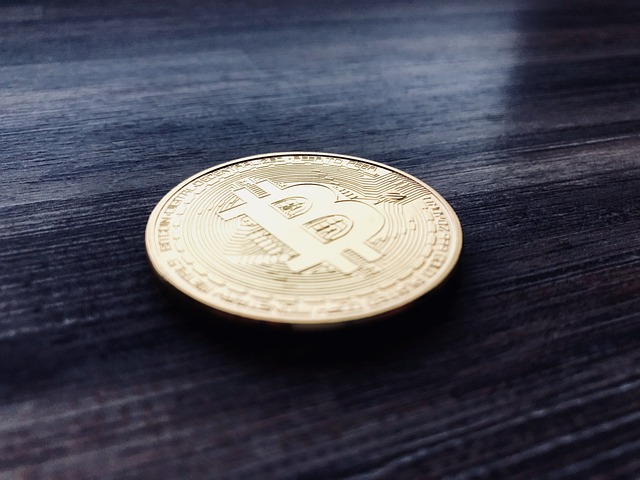
Competition Between EVM and L1s Will Shape the Future of DeFi (Opinion)
Written by Piers Ridyard, CEO of RDX Works
Alternative Tier 1s such as the MetaMask wallet, Uniswap decentralized exchange, OpenSea NFT market and solana were developed during the 2018-19 bear market. The rise in DeFi and NFTs in 2021 was only possible with such a core infrastructure in place.
A similar story is playing out today. Two competing visions emerge from beneath the rubble, aiming to become the essential infrastructure of the next cycle:
The incumbent is Ethereum and its ecosystem of Layer 2 (L2) scaling networks such as arbitrum and Polygon that run the Ethereum Virtual Machine (EVM).
A new set of Layer 1s (L1s) deliberately eschewed EVM and aimed for an enhanced wallet user experience, application development environment, and scalability, with networks such as aptos, Radix, and sui being prime examples.
EVM Layer 2s: Scaling the Attendant
EVM is the dominant platform on Web3 today, accounting for ~95% of all DeFi assets under management (AUM), ~80% of active addresses, and ~40% of all Web3 developers.
This success led to Ethereum congestion and high transaction fees. The almost universally accepted solution: scaling L2 networks.
L2s are separate networks that offer their own ledgers, tokens, and decentralized applications (dApps). Their defining feature is that they periodically send summaries of their transactions back to L1, Ethereum, and support L1 to guarantee that transactions will not continue. back.
These L2s offer the same application development environment as Ethereum, the EVM. This allows any dApp built on Ethereum to be easily cloned to L2. From DEXs to lending to NFTs, cloned dApps can benefit from a new network that inherits some of Ethereum’s security but has higher throughput and lower fees.
But there are problems with this approach.
First, security and developer experience remain a major concern. From the first DAO hack in 2016 to billions of dollars lost annually in 2021-2022, EVM has proven time and time again that dApps created with it cannot protect users’ funds.
Second, the user experience is far from mainstream ready. EVM imposes a high technical burden on its users, including “blind signing,” which is the equivalent of signing a blank check for every transaction; “seed phrases” – a password that must be kept safe, otherwise you may lose all your assets; or the need to be wary of “malicious tokens” that could steal your assets.
The need to maintain backwards compatibility means that solutions tend to be additive, accumulating greater complexity and risk, rather than making the radical changes needed to properly fix problems. An example of this is ERC-4337 Account Abstraction, Ethereum’s solution to seed expressions, which proposes a completely new “memory pool” through which transactions must be routed.
Third, since each new network is like a new island with its own dApps and liquidity, L2s only half solve the scalability problem, they are not “combinable” with the Ethereum mainland or other L2s. Therefore, we will continue to see projects prioritize being on Ethereum, or in the scenario that L2 gains enough traction to provide a compelling alternative, it will itself eventually become bogged down, taking us back to square one.
Non-EVM L1s: The Challengers
Rather than repeating the EVM, a new L1 group is forging their own path, starting from scratch with their own custom stack.
First, they differentiate by addressing the never-ending attacks and vulnerabilities through an improved developer experience. To achieve this, for example, some projects have turned smart contracts containing assets into physical objects that can be “moved” between owners, with features that will increase the security of tokens and smart contracts.
At the same time, other protocols have taken the object model one step further, with all assets managed natively by a “DeFi Engine.” just as Game Engines reduce errors and increase game developer productivity by locally managing behaviors like physics and gravity, the same concept is now being applied to finance.
In fact, the fact that assets are specific to the ledger is not only an advantage for developers. This is a prerequisite for an improved user experience. By understanding assets natively, these platforms can provide users with human-readable transactions that guarantee what the transaction will do.
This solves blank check “blind signing” transactions, which EVMs and L2s cannot architecturally solve because they inherently cannot guarantee something they do not understand.
On scalability (the problem L2s were created to solve), new approaches promise to offer “linear scalability” without compromising the all-important composability.
This includes “intra-validator sharding” or “multi-shard consensus,” which allows each computer validating transactions to actually consist of many different underlying computers.
This allows parallelization of processing across multiple groups of computers. In each of these cases, adding more computers to the network allows more transactions to be processed, similar to scaling the internet itself.
The Fight Ahead
Despite the technical advantages offered by the latest L1s, decentralized networks are all about community and momentum. EVM and its L2s have significant leadership in public awareness, developer community, and overall tooling and infrastructure.
Getting developers to learn a new language and users to adopt a new chain amidst all the noise isn’t easy, and it depends on how well the new chain’s value proposition can be spread.
But if we take a step back, DeFi and Web3 account for just 0.01% of global financial assets, 0.1% of internet users, and 0.1% of global developers. The journey ahead is long, and newer platforms with radically different approaches and significantly less technical debt still have ample opportunity to fight for the remaining 99.9%.
Author biography
Piers Ridyard is the CEO of RDX Works, a public protocol and ledger for DeFi. Piers got his start in crypto when he started mining Ethereum’s genesis block in early 2015, investing in the “DAO” and diving deep into everything from game theory to market predictions. This eventually led him to found and quit Surematics, a YCombinator company that developed decentralized settlement room software for insurance companies, in 2017. Piers became CEO of RDX Works in 2017, joining founder Dan Hughes and growing the team to over 75 people. World. His background includes finance, law, electronics and mathematics. He also holds two degrees, one in Chinese and Business and the other in Law, and has achieved the Level 1 Chartered Financial Analyst designation.
SPECIAL OFFER (Sponsored)
Binance $100 Free (Exclusive): Use this link to sign up and get $100 free and 10% discounted fee on binance Futures for your first month (conditions).

#Competition #EVM #L1s #Shape #Future #DeFi #Opinion

